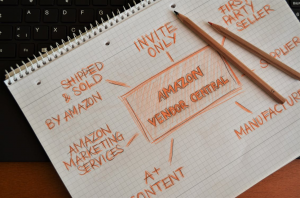In today's digital landscape, data privacy is not optional—especially for businesses operating in regulated industries like alcohol sales. Customers expect their personal information to remain secure, and regulatory bodies impose strict penalties for non-compliance. For alcohol website development, this responsibility becomes even more critical due to the sensitive nature of the data involved, such as age verification details and payment information. While encryption forms the backbone of data security, a layered approach is necessary to address evolving threats. This guide breaks down the technical and operational strategies required to build a secure, compliant alcohol website.
Introduction to Data Privacy in Alcohol E-Commerce
Alcohol websites face unique challenges compared to standard e-commerce platforms. Beyond handling payment details and personal data, they must verify user ages and comply with regional laws governing alcohol sales. A single breach could lead to legal repercussions, financial losses, and reputational damage. This makes data privacy a cornerstone of alcohol website development.
The foundation of trust lies in protecting user information from unauthorized access. While encryption is essential, it's only one piece of the puzzle. A holistic strategy includes secure coding practices, rigorous monitoring, and transparent communication with users. Let's examine the components of a robust data privacy framework.
Understanding the Data Collected by Alcohol Websites
Alcohol websites process three primary types of data:
- Personal Information: Names, addresses, and contact details are collected during account creation and checkout.
- Payment Details: Credit card numbers, expiration dates, and transaction histories require stringent protection.
- Age Verification Data: Proof of age, such as birthdates or government ID scans, is unique to alcohol sales and heavily regulated.
Legal Requirements:
Laws like the GDPR (EU) and CCPA (California) mandate strict data handling practices. Additionally, alcohol-specific regulations, such as the U.S. Federal Alcohol Administration Act, require age verification systems to prevent underage sales. Non-compliance can result in fines or license revocation.
Encryption: Securing Data in Transit and at Rest
Encryption converts sensitive data into unreadable code, which can only be decoded with a key. Two primary forms are used in alcohol website development:
- SSL/TLS Certificates: These protocols encrypt data transmitted between users and servers. Websites without HTTPS risk exposing login credentials or payment details to hackers.
- Database Encryption: Data stored on servers, such as user profiles or transaction records, should be encrypted to prevent unauthorized access during breaches.
- Key Management: Encryption keys must be stored separately from encrypted data. Hardware Security Modules (HSMs) or cloud-based key management services offer secure storage solutions. Regular key rotation further reduces risks.
Layered Security Beyond Encryption
Encryption alone cannot stop all threats. Additional safeguards include:
- Multi-Factor Authentication (MFA): Requiring a second verification step, like a one-time code sent via SMS or email, adds a barrier against unauthorized logins. This is particularly important for admin accounts managing sensitive data.
- Regular Security Audits: Automated vulnerability scanners and manual penetration tests identify weaknesses in code or infrastructure. For example, outdated plugins or misconfigured servers can create entry points for attackers.
- Secure API Design: APIs connecting payment gateways or age verification tools must follow security standards like OAuth 2.0. Rate limiting and input validation prevent abuse and data leaks.
Also Read: Top 10+ Shopify Themes For Wine Retailers: The Ultimate Guide
Secure Development Practices for Alcohol Websites
Building a secure website starts with writing clean, resilient code:
- Input Validation: Sanitizing user inputs prevents attacks like SQL injection, where hackers manipulate forms to access databases.
- Code Reviews: Peer reviews and automated tools like SonarQube detect vulnerabilities before deployment.
- Trusted Libraries: Open-source frameworks should be vetted for known security flaws. Tools like Snyk monitor dependencies for risks.
- Infrastructure Hardening: Servers should be configured with firewalls, intrusion detection systems (IDS), and strict access controls. Segmenting databases (e.g., separating payment data from user profiles) limits damage during breaches.
Post-launch monitoring and Incident Response
Security doesn't end at launch. Continuous practices include:
- Real-Time Monitoring: Tools like Splunk or AWS CloudWatch track traffic patterns and flag anomalies, such as sudden spikes in login attempts.
- Incident Response Plans: A predefined protocol ensures breaches are contained quickly. Steps might include isolating affected systems, notifying users, and reporting to authorities.
- Patch Management: Regularly updating software, plugins, and libraries closes security gaps. Automated patch tools reduce human error.
- Backup Strategies: Encrypted, off-site backups enable data recovery after ransomware attacks or hardware failures. Testing backups periodically guarantee their reliability.
Building User Trust Through Transparency
Clear Privacy Policies
A well-structured privacy policy is the first step toward transparency. It should outline what data is collected, how it's stored, and whether it's shared with third parties. Avoid dense legal language—instead, use plain terms to explain practices like data retention periods or cookie usage. For example, specify that addresses are only used for delivery and never sold to advertisers. Including a summary section with bullet points helps users quickly grasp key points without reading the entire document.
User Consent Controls
Users appreciate having control over their data. Implement granular consent options, such as allowing them to opt out of marketing emails while still permitting transactional notifications. Cookie banners should clearly differentiate between essential cookies (e.g., shopping cart functionality) and optional ones (e.g., analytics). Provide an easy-to-access dashboard where users can update preferences post-signup, reinforcing their autonomy.
Security Badges and Certifications
Displaying trust signals like SSL badges or compliance certifications (e.g., PCI DSS) on checkout pages reassures customers. These visual cues signal that the website meets industry standards for data protection. Partner with recognized security providers (e.g., Norton, McAfee) to add credibility. However, avoid overcrowding pages—strategically place badges near sensitive actions like payment forms or log in fields.
Also Read: Advanced Liquid Coding Techniques for Custom Shopify Development Services
Secure Age Verification Systems
Third-Party Verification Services
Specialized age-check tools, such as AgeChecker.net or Jumio, offload compliance risks. These services validate IDs or birthdates without storing sensitive data on your servers, reducing liability. Ensure providers adhere to regional laws (e.g., GDPR for EU customers) and offer audit trails for regulatory reviews. Integration via APIs allows real-time verification during checkout.
Data Minimization Practices
Collect only the minimum information required for age checks. For instance, a birthdate may suffice instead of scanning full government IDs. Storing excess data increases breach risks and complicates compliance. If ID scans are mandatory, delete them immediately after verification. Clearly communicate this practice in privacy policies to build trust.
Encrypting Age-Related Data
Treat age verification data with the same rigor as financial details. Use AES ( Advanced Encryption Standard) encryption for stored birthdates or temporary ID scans. Ensure third-party services also encrypt data during transmission. Regularly audit these systems to confirm encryption protocols remain up-to-date and aligned with evolving standards.
Managing Third-Party Risks
Vendor Vetting Processes
Before integrating third-party tools, scrutinize their security posture. Request proof of certifications like SOC 2 or PCI DSS compliance. Review their breach history and ask for references from similar clients. Establish ongoing monitoring—subscribe to their security bulletins or use tools like SecurityScorecard to track their risk profile over time.
Contractual Safeguards
Legally binding agreements should define roles in data handling. Specify that vendors must notify you of breaches involving your data within 24 hours. Include clauses allowing periodic security audits of their systems. Clearly outline penalties for non-compliance, such as contract termination or financial liabilities.
Securing API Connections
APIs linking to third-party services are common attack vectors. Enforce OAuth 2.0 for authentication and encrypt all API traffic with TLS 1.3. Implement rate limiting to prevent brute-force attacks and input validation to block malicious payloads. Monitor API logs for unusual patterns, such as repeated failed login attempts from unfamiliar IP addresses.
Data Retention and Deletion Policies
Defining Retention Periods
Set time limits for storing user data based on legal and operational needs. For example, retain transaction records for six months to handle chargebacks but delete birthdates after immediate verification. Regional laws vary—California's CCPA may require shorter periods than GDPR. Document these rules internally to ensure consistency.
Automated Deletion Workflows
Manual data cleanup is error-prone. Use tools like AWS Data Lifecycle Manager or Azure Storage Policies to automatically purge obsolete records. Schedule deletions during off-peak hours to avoid disrupting operations. Test workflows regularly to confirm data is irreversibly erased and not merely archived.
Handling User Deletion Requests
GDPR and similar laws grant users the “right to be forgotten.” Provide a simple form or button for deletion requests in user accounts. Verify identities through email confirmation or security questions before proceeding. After deletion, send a confirmation email and specify that residual backup data will be removed during the next cycle.
Training and Awareness for Development Teams
Ongoing Security Education
Human error causes 85% of breaches, making training critical. Conduct quarterly workshops covering phishing simulations, secure coding practices, and incident response drills. Update teams on emerging threats—for example, how AI-driven attacks can exploit code vulnerabilities. Certifications like Certified Ethical Hacker (CEH) can deepen technical expertise.
Strict Access Controls
Follow the principle of least privilege (PoLP). Grant developers access only to systems necessary for their roles. For sensitive tasks like database management, require multi-person approval. Use tools like Azure Active Directory to enforce role-based permissions and log all access attempts for audits.
Detailed Documentation Practices
Maintain updated records of security protocols, codebase structures, and encryption key locations. Use platforms like Confluence or Notion for centralized, searchable documentation. Include step-by-step guides for common scenarios, such as patching vulnerabilities or responding to breach alerts. Version control ensures teams reference the latest procedures.
Conclusion
Alcohol website development demands a proactive approach to data privacy. Encryption, layered security protocols, and transparent practices work together to protect sensitive information and maintain compliance. By integrating these strategies, businesses can build platforms that inspire customer trust and withstand regulatory scrutiny.
Investing in robust data privacy measures isn't just about avoiding penalties—it's a competitive advantage. Customers are more likely to return to platforms they perceive as safe, ensuring long-term success in the digital alcohol marketplace.
Expand Your Business with Expert Wine and Alcohol Website Development
If you're looking to elevate your online presence and boost your alcohol sales, our specialized services in Wine and Alcohol Website Development can tailor a solution that fits your unique needs. At CartCoders, we understand the intricacies involved in creating secure, compliant, and user-friendly alcohol websites. Our team of experts employs the latest technologies and follows stringent security practices to ensure your website not only attracts visitors but converts them into loyal customers. Ready to get started? Visit our Contact Us page to discuss your project with our specialists and take the first step toward transforming your digital strategy.






